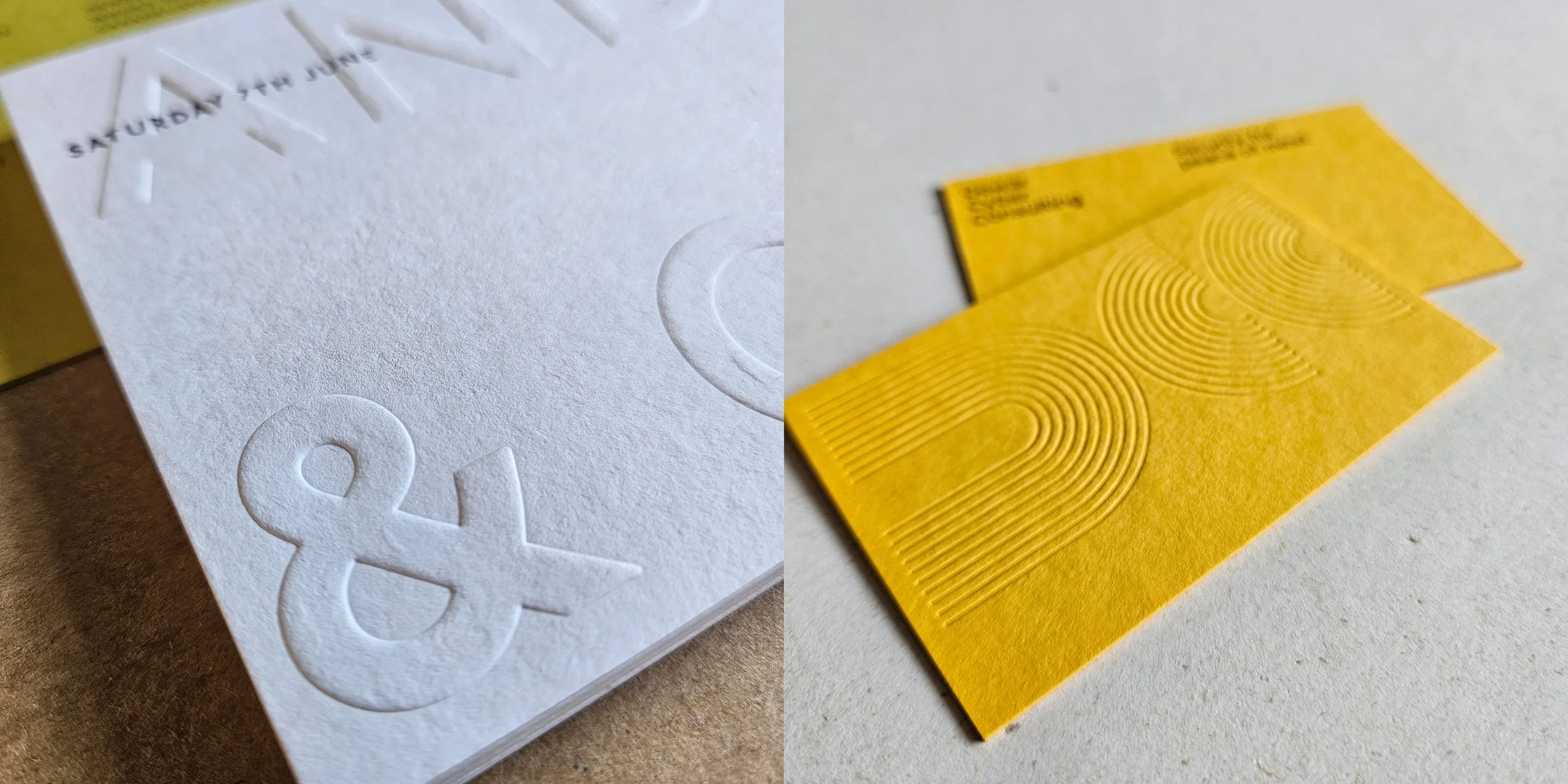Embossing vs. Debossing: What’s the Difference?
In a world where most print is flat, embossing and debossing remind us that paper can have depth and life. These are the techniques that make you want to run your fingertips over the surface, to feel the detail as much as see it. But what’s the difference between the two?
Embossing
This is when a design is raised above the surface of the paper. Imagine a logo standing proud, letters you can trace with your hand, or a subtle pattern catching the light. It’s made using a custom die and counterforce that press the paper into shape, leaving a crisp, three-dimensional finish.
Debossing
Does the opposite. Instead of raising the design, it pushes it into the paper. The impression sinks down, creating a carved look that feels deliberate and refined. It’s a quieter detail than embossing, but just as powerful.
Finishing
Both finishes are about craftsmanship. They rely on thick, high-quality paper that can take the pressure of the press, and the precision of a skilled printer who knows how far to push without damaging the stock. That’s where experience counts.
In our Glasgow workshop, embossing and debossing are done the traditional way: by hand, one sheet at a time. The results speak for themselves. A finish that feels luxurious, tactile, and memorable.
You’ll see embossing and debossing on wedding invites, stationery, packaging, even business cards. Anywhere you want to add texture and presence, these finishes deliver.
Not sure which one’s right for you? Sometimes it’s about sight, sometimes it’s about touch, and often it’s about both.
Thinking about embossing or debossing for your next project? Get in touch.



